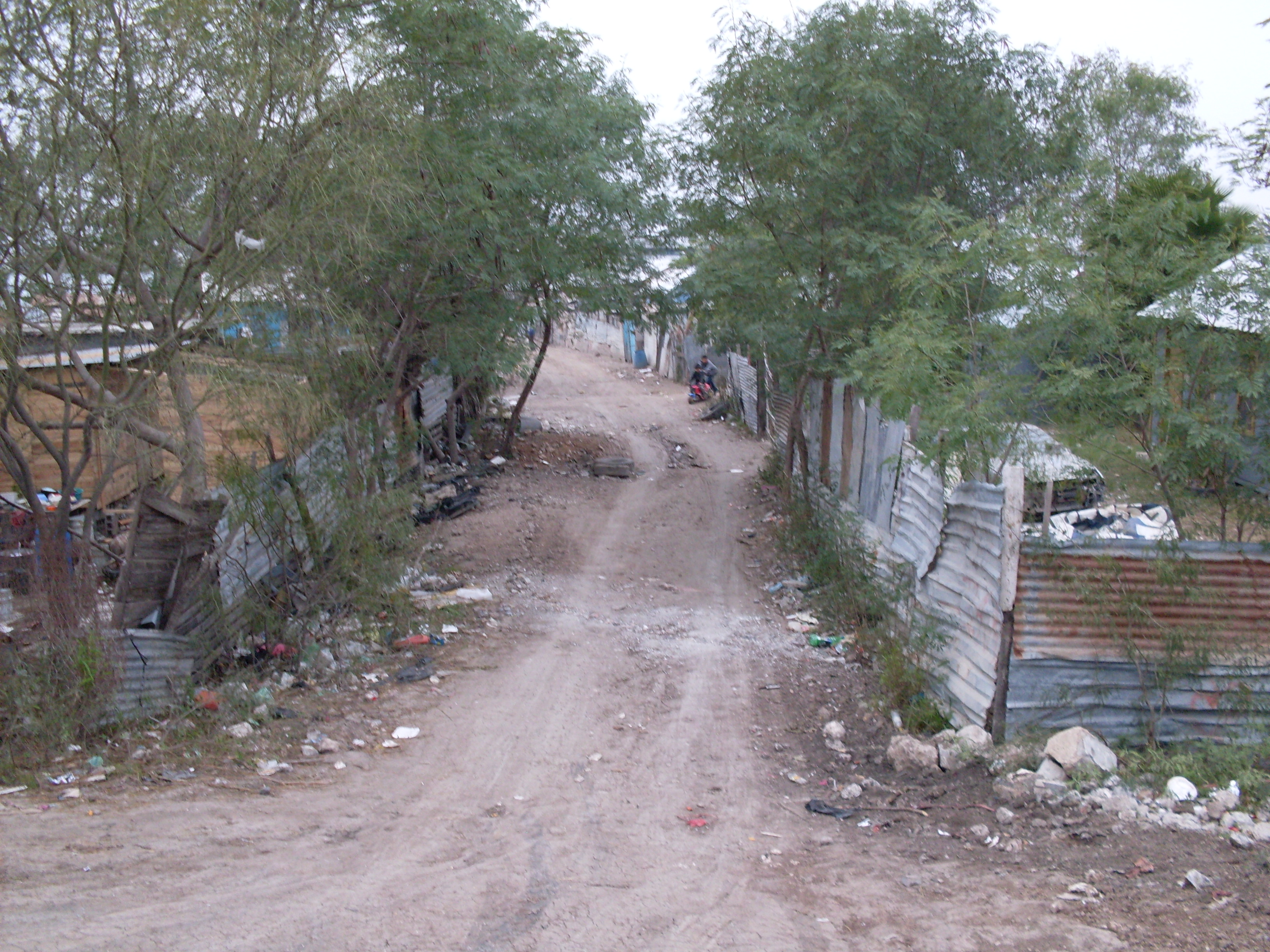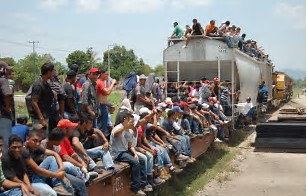The violence that has exploded in the northern state of Sinaloa in late October and Monday, November 6, 2019 that resulted in the murder of at least 9 persons, women and children could signal a collapse of the expectations that Mexicans have had with their new President. Deterioration has increased all year and is accelerating. This paper below is a caution to Texas State Agencies.
This paper examines some aspects of formal organizations including what the success and failures of an organization can mean for a person and a community and a state. Encounters with formal organizations start, typically, with education as early as day care and most employment is in a formal organization. For most Americans, encounters with formal organizations will start with births at a hospital, maybe day care and then elementary school.
Formal organizations are a dominant feature of modern societies. But with the exception of the military until the 20th Century most Americans had little contact with such organizations. Family and the neighborhood were the dominant social features.
For Americans, Europeans, Japanese and South Koreans that has completely changed in the last hundred years. Families in these countries are typically the nuclear family of parents and children without the presence of kin like grandparents, cousins, aunts, etc. Increasingly more persons do not marry or have children or wait into nearly middle age to have a child. Small family size and drops in family formation are the most extreme among these countries in Japan where there have been net population decreases since 2010. Japan permits very little immigration; so it may represent for some nations the future. For the Japanese, more so than these other countries, the formal organization can be the primary social anchor!
Thus the study and functioning of formal organizations is an ever-larger issue in the modern world. Part of the study is how best to construct and operate such important parts, the organization, of our society.
IBM as an example of organization change, survival and success
In the 1970’s I worked with offices IBM (International Business Machines) had in Austin to help them think about organizational designs that would permit their success in creating and selling computers. IBM had its beginnings building mechanical calculators, punch card tabulating machines, cash registers and scales at the start of the 20th Century. By the 1930’s its machines found wide use by many countries when they compiled censuses of their population. Punched cards were used to record data such as on persons and then the cards were run through mechanical tabulating machines where a punched hole in the card would represent some data point such as the age, ethnicity, gender or residence of a person.
By the 1950’s IBM had moved from card sorters/readers of punched cards to computers. Cards as well as electronic typewriters were used to enter data into the computer and then programs were written to count, sum, analyze, map, display and print calculations. The data that had been entered with a typewriter or a card was stored on a tape or rotating disk where it could be read and analyzed and findings printed out. Moving to electronic storage from cards improved speed and flexibility. IBM would sell and maintain these computers, the 360 and 370 were the main ones, as well as renting time to customers.
The company was highly profitable until the beginnings of the 21st Century but the flow of innovation in technology much of which IBM was involved in creating changed the realty of computing. Firms like Xerox, Hewlett Packard, Apple and Tandy-Radio Shack began to sell computers that would fit on a desktop and could be bought for less than $5,000 rather than the millions of dollars that a mainframe computer would cost and filled a large building. Aware of this developing competition, IBM moved a set of its engineers away from his headquarters in New York to Boca Raton, Florida to help IBM think about and then invent a computer that was a radical change from its main frame and that was to create a desktop computer. IBM developed its own brand of desktop machines released in 1981 including from programmable typewriters to desktop computers and the complex programming including, the operating system and various applications.
Then in 2005 IBM then turned from a manufacturer of hardware to a company that focused upon selling computer services. It sold its personal computer business to a Chinese firm, Lenovo. It changed as a company more from an organization that had factories that built computers and related items like disk drives, circuits, storage media to an enterprise that sold services like weather forecasting, health data storage and interpretation, cloud computing and many other services. It changed its business from building and selling computers and related equipment to selling services including from very large computers-super computers and doing research on the leading edge of computing like developing a quantum computer. Such a computer promises to be an advance from current computing as much as the IBM 360 was from the tabulating machines of the 1950’s.
This path of IBM from a manufacturer of calculators and cash registers to a firm that sells complex computer services with a high rate of change and innovation is a useful model of how organizations must change. This is a path that business organizations must follow and so must government agencies. Let’s look at some facts beyond the IBM example that set the stage for why we must work on continuously building our organizations in the State of Texas.
Setting A Perspective For Challenges to Texas
In general there are several broad challenges to life in our state. One set of challenges comes from the geographical location of the state. Texas more than any of the 50 states has a unique situation represented by the border with Mexico. The length of the border and the size of cities on both sides are many times those cities along most of the rest of the border in New Mexico, Arizona and California. More than a century and a half ago, Texas was part of Mexico and Texans fought and won a revolution against Mexico even as Mexico fought efforts by Spain and France to keep it a colony.
Significant cultural continuity exists between Texas and Mexico as well as high levels of trade and tourism. But there are complex relations with another nation that no other state must navigate!
Differences Between Texas and Mexico
While having some similarities in history and geography, average incomes, education levels and standards of living are very different and are moving apart in many ways. In 1900 the economies and many of the communities in both Texas and Mexico were similar. Life was mainly in rural areas and small towns. Families were self-sufficient through raising crops and animals for local consumption. Travel, trade and even awareness of the larger world were all quite limited. But individuals and families were less dependent on state and national events. Economies were local and only wars or massive weather events like hurricanes or earthquakes would affect farms and villages.
Railroads, highways, large-scale farming, forestry and ranching began processes to consolidate family farms in Texas and with growing factories, Texas began becoming urbanized. Air travel became frequent. First the telephone and then a variety of broadcast and internet technologies linked communities across the state and to national and international events. Today the state is mainly urban with 90% of the population in a complex from Dallas, west to Ft. Worth, south to Austin then San Antonio, east to Houston and back north to Dallas. Most Texans work in some form of formal organization: factories, refineries, banks, corporate offices, large farms, government agencies and business parks. Solitary workers like a cowhand of old or the self-sufficient family with the woman in the kitchen and the man in the field is the past… more than a hundred years in the past.
Mexico, by comparison, is where Texas was in the 1950’s, early in its process of becoming urbanized and securing jobs in organizations not on farms and ranches. The nation is largely urbanized with about 80% of the population living in large cities like Mexico City with more than 25 million in the City and surrounding towns. However substantial regions in Mexico’s southern states have communities where Spanish is not the first language, paved roads, water and sewage utilities, electricity and telecommunications are primitive. In these regions the dominant social organization is the extended family and the neighborhood.
Mexico has 32 states and additionally its Federal District. The states vary tremendously in terms of education and wealth from north to south. The wealthiest and highest educated state is Nuevo Leon that touches Texas near Laredo. There are 60 different languages spoken mainly, and again, in the southern states and 7% of the 130 million citizens exist on less than 2 dollars a day.[i] Unlike the rural population that had their land to fall back on, the Mexican urban population is highly dependent on daily earnings with the average family having less than the equivalent of 40 dollars in savings. This means holding a job is critical.
Education particularly to the high school level and college is a serious shortcoming in Mexico. Fewer than half the population finish high school and less than a quarter have some college years.
Lack of school attendance is one part of the deficiency in Mexican education. The other parts are the capacity of the educational programs and the preparation of teachers. For university admissions, there have been periods of time when students had to be selected for admission. But there have been other times including a recent decree by the new Mexican President, Lopez Obrador, that everyone that wishes to go to college will be admitted. As in the past courses and majors that require laboratories and equipment are overwhelmed and students do not get appropriate education. The other problem with open admission is inadequate numbers of teachers per students as well as unqualified teachers. Mexican secondary education is unionized and teaching positions are traded and sold rather than persons being selected and promoted on merit.
Mexico is far behind in its institutions and skilled personnel required for the educational preparation for the societies of the 21st Century. While its lower cost labor has provided jobs to manufacturers from America, Europe and Asia, automation offers less costly ways of providing labor in manufacturing and services industries, year after year. Automation is rapidly removing the advantage to manufacturers that low cost labor from Mexico provides.
Population Change In Texas
Texas has grown in population consistently since the 1800’s with its estimated population in 2018 of 28.70 million, up substantially from 25.1 million in 2010. Its annual growth rate of 1.80% ranks 3rd in the nation. Texas has three cities with more than 1 million people: Dallas, Houston and San Antonio, which are in the category of the 10 most populous cities in the nation. Texas continues to become more urbanized. From 2010-2018 Austin was the most rapidly growing city in the nation. Ethnic ratios are changing with Hispanics projected to be the largest ethnic group by 2022. By 2040 the state’s population is expected to be 45 million.
Texas Economy
Texas is the largest exporting state in the nation whose products include electronic and computer gear, agriculture, refined petroleum and chemicals. Texas’ steady population growth creates pressure on the state’s infrastructure of highways, rails, airports, telecommunications, water, energy, health, public safety and education resources. While Texas is the nation’s largest producer and refiner of petroleum, it has, interestingly, achieved leadership in solar and wind energy. It generates the greatest amount of renewable energy in the United States and one Texas city, Georgetown, has its city electrical grid entirely fed by renewable sources. As energy efficiencies improve from lighting to heating to other demands, Texas could meet all of its domestic energy needs with electricity and export that energy as well. How that will affect areas involved in production and refining of petroleum is unclear.
Texas’ Prosperity Dependent on Export Relations, Primarily Mexico
The prosperity but also the safety of Mexico is not simply a border issue. Texas is the nation’s foremost exporting state and Mexico is the largest customer of Texas’ exports. Those exports to Mexico totaled over 109.7 billion dollars in 2018 and helped ensure more than 1 million jobs for Texans. A unique arrangement comes from border factories that do most of the labor-intensive manufacturing activities in Mexico with Mexican employees but the design, direction and some of the more complex manufacturing is done on the Texas side. The in-bond or maquila factories were devised by a Mexican businessman and political leader in Juarez, Jaime Bermudez in the 1980’s, and have transformed the border and much of Mexico’s manufacturing resources to world competitive factories.
Trade between Mexico, the United States and Canada was significantly expanded with the NAFTA trade agreement that largely eliminated tariffs on products between these three nations. However those relationships are being examined in the context of tariffs being applied by many countries. Part to the success of Donald Trump in the 2016 election was his promises to bring the jobs back to states like Illinois, Ohio, Pennsylvania and Michigan that were the homes or major manufacturing sites of many major American manufacturers including General Motors, Chrysler, Ford, International Harvester, John Deere, Caterpillar, U. S. Steel, General Electric, Motorola, Zenith, Frigidaire, Penn Central and hundreds of other companies that had labor unions that were an if not the bedrock of the Democratic Party. During the campaign and since he has charged many countries and companies with trade practice that abuse the United States as well theft of intellectual property. He pledged in his campaign to bring the jobs back and also to build a wall along the border with Mexico to control trade and immigration. As the list of trading nations on the last page of this paper notes, Texas prosperity is not only in the hands of Texans but people from a number of countries.
Challenges From Mexico-Crime, Corruption, Impunity
Since 2000 Mexico has experienced growing crime and violence in all of its states. The causes are likely a result of traditions in the culture that permit small-scale corruption such as the expectation that a person pays money, the mordida, directly to a police officer when they incur an official contact. The pattern extends to government positions that are purchased or secured through patronage with a strong emphasis on politics being a spoils system. Rather than organizations that operate with fairness and transparency, there are patterns of cronyism, impunity and corruption.
Government corruption was rooted in the colonial system and was a major if not the major reason for Mexico’s three major revolutions in 1810 against Spain, then in 1862 against France and most recently in 1910 against a pattern of dictatorial control from Mexico City. Part of that corruption, today, is organized gangs in Mexico relatively free of Mexican government opposition that bring several types of contraband into Texas and then to other parts of the United States and Canada. The pattern of drug smuggling is not new and goes back almost a hundred years to gangs in Matamoros and Reynosa that brought alcohol to cities like Houston and Galveston during Prohibition in the years from 1920 to 1933. These early Mexican gangs were created by the same opportunities that saw the growth of large scale gangs in Chicago, Detroit, New York City; indeed the cities of the urban north. Much of the alcohol that they in America’s northern cities smuggled came from Canada.
For the past two decades Mexican drug activities via cartels, have been a growing feature of the border with Mexico. Smuggled drugs include cocaine sourced from South America, morphine increasingly grown in poppy fields in western Mexico, marihuana grown throughout Mexico and in the last decade synthetic drugs such as methamphetamines and fentanyl sourced from chemicals from China and brought to the Pacific ports of Mexico. The Drug Enforcement Agency estimated in 2014 the annual volume of illegal drugs is about 100 billion dollars up IH 35 or a variety of routes from McAllen and Brownsville to connect to IH 10 to Houston and then north and east.
The unique challenges Texas faces are of a neighbor with high crime and violence, it cannot control. Mexico reached the highest level ever recorded in 2017 then in 2018 even higher and the first 9 months of 2019 are higher still. Texas is left with urging the United States Federal Government to be more effective in controlling the national border, anticipating events in Mexico and being very watchful of that country and increasingly most of Central America.

Immigration
Immigration has become a prominent topic since 2014 nationally and across the world. Immigration is a characteristic of human societies. In antiquity small human groups would migrate with the weather and available crops and animal resources. As recent as the 1880’s the Comanche Indians would spend summers in the northern plains of Texas near cities like Amarillo, Abilene and western Oklahoma. Then with the winter they would migrate following herds of bison (buffalo) as far south as Saltillo in the southern part of the Mexican state of Coahuila. While some say with a romantic turn of words that immigration is part of America, statements often do not completely reflect the impact of immigration in all nations and certainly in the Americas. North America has seen in the last 15,000 years several immigrations from north to south. About 1200, it is suspected that a drought in the Four Corners area of the western United States created a migration south to the area of today’s Mexico City and those migrants became the Aztec.
A larger immigration was Europeans coming to North America. The impact of Spanish immigration to Mexico led to a drop in the population of the native cultures (American Indians) from 10 million to 1 million in a century. The magnitude was similar in the United States over two centuries. These millions of deaths came primarily from exposure to diseases against which the native populations of North America had no developed immunities. The next cause of the loss of life was the destruction of traditional means of livelihood and the third was from warfare.
Immigration continued to the United States during the 19th and 20th Century with persons coming from China, Ireland, Italy and Poland, but mainly from Europe. There was substantial Mexican immigration during the 1910 Mexican Revolution and various European groups during and after the two World Wars. In the later half of the 20th Century, a pattern developed of seasonal Mexican immigration to work various harvests in the United States with Mexicans sending funds, remittances, back to families in Mexico. The importance of such funds is that they represent the third or fourth largest source of income to Mexico only exceeded by tourism, manufacturing and agricultural exports.
Several changes in labor force issues and immigration began to occur in the 21st Century. A trend that began in the last two decades of the 20th Century was moving labor-intensive activities to low wage countries as we earlier noted. NAFTA was the approach in North America. This caused job losses in many manufacturing communities of the United States and job gains in Mexico. But the advantages of low-cost labor are now being eroded by technologies that required much less labor, particularly low-skilled labor. Manufacturing site decisions have begun to shift to where the market was not where low cost labor was. Moreover, the labor required in these new technologies was not low-cost but highly educated and capable of continuous education and change.
This has created severe problems for areas of the world with low educational levels. It is most evident in Latin America where the average educational level in Mexico is about the 6th grade and much less in the countries of Central America except for Costa Rica. Poverty is increasing and as well as violence. These are the forces that drive attempts to immigrate to the United States. A generation ago those migrants would have filled low wage jobs in America. But such jobs are disappearing. The immigrant populations now pose heavy and continuous burdens on government services from health to education to safety. The chart below is from the Border Patrol and is a monthly tally of persons caught attempting to enter the United States without official papers and procedures.
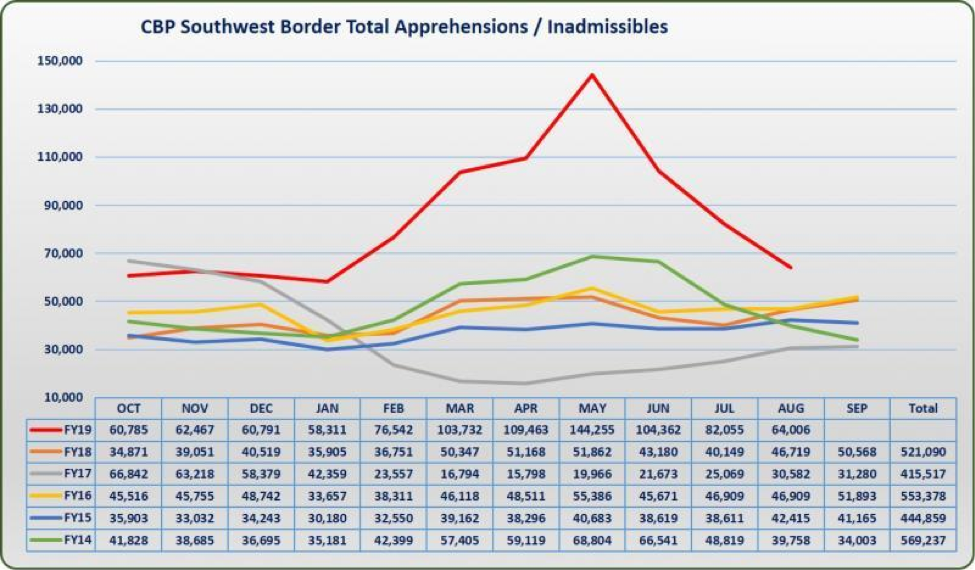
Current legal immigration levels have risen to 1 million each year. As the chart above indicates we are now seeing a second million attempting to simply enter the United States apart from legal immigration paths. The majority of those numbers are appearing on the Texas border with Mexico.
Summary
These then are among the organizational challenges faced by Texas agencies:
- Continuous efforts to adapt and use technology to maintain efficiency and effectiveness and responsive to a business and citizen environment that does the same. Technology moves very rapidly and Texas government must keep pace.
- Adapt to growth and urbanization but with attendant rising costs of living for employees. With the majority of state of Texas employees living in or near Austin and with the cost of housing now among the highest in the state, more and more state employees have to commute as many as 70 miles each way each day to find housing that meets the level of income from a state agency position.
- Integrate migrants from other parts of the country and immigrants into Texas communities.
- Address challenges coming from high rates of immigration including high percentages of children, low education and skill levels and health issues.
- Economic disruption of trade with Mexico. The impact of negotiations around tariffs affect Mexico trade but also trade with Europe and particularly Asia.
Summary
More than any other state, Texas has agencies that promote development and research in the fulfillment of their functions. Organizational assessment and development is a priority in all of state government. This has paid important dividends in making the state more attractive than other regions in the country and created one of the most dynamic economies in the nation. But issues exist both from within the state and from the outside. These are among the major issues:
- Growing population that will cause rising property prices, road and street congestion, increased demands for health and human services.
- Increasing demand for skilled high tech workers and concomitant decline in jobs for low educated and trained persons
- Increasing business sectors that will result in higher wages in the private sector and issues for government salaries.
- Exposure to world trade with more complex markets and rapid changes in the Texas economy.
- Concerns about the soundness of major trading partners and issues around tariffs: Here are Annual Percentages of Trade with the major trading partners starting with the largest: Mexico, Canada, China…
- Mexico 36.9%
- Canada, 8.7%
- China 6.2%
- Brazil 3.8%
- South Korea. 3.7%
- Japan 3.4%
- Netherlands 2.7%
- Singapore 2.2%
- Stability of Mexico and Immigration: Illegal immigration attempts are at record levels posing critical issues of safety, congestion, cost and resolution. Creates substantial problems of travel and joint manufacturing and product shipping along the border.


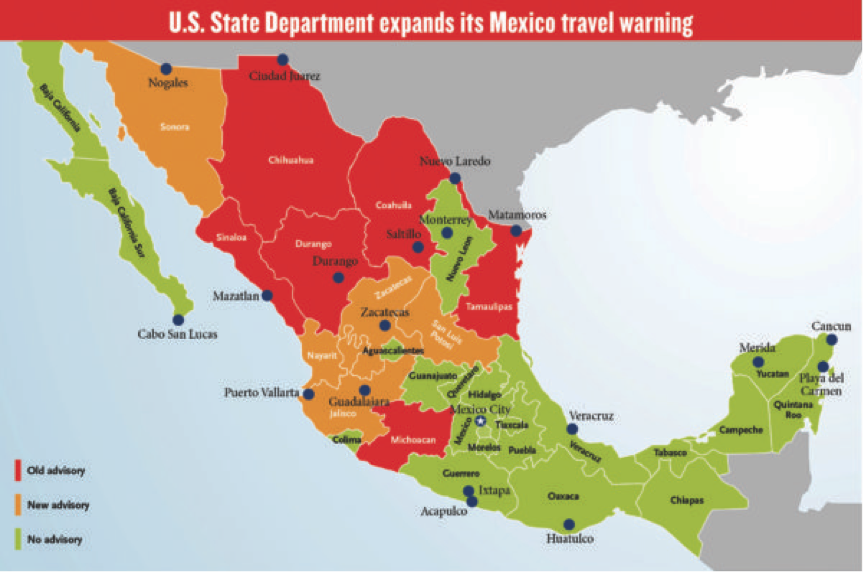
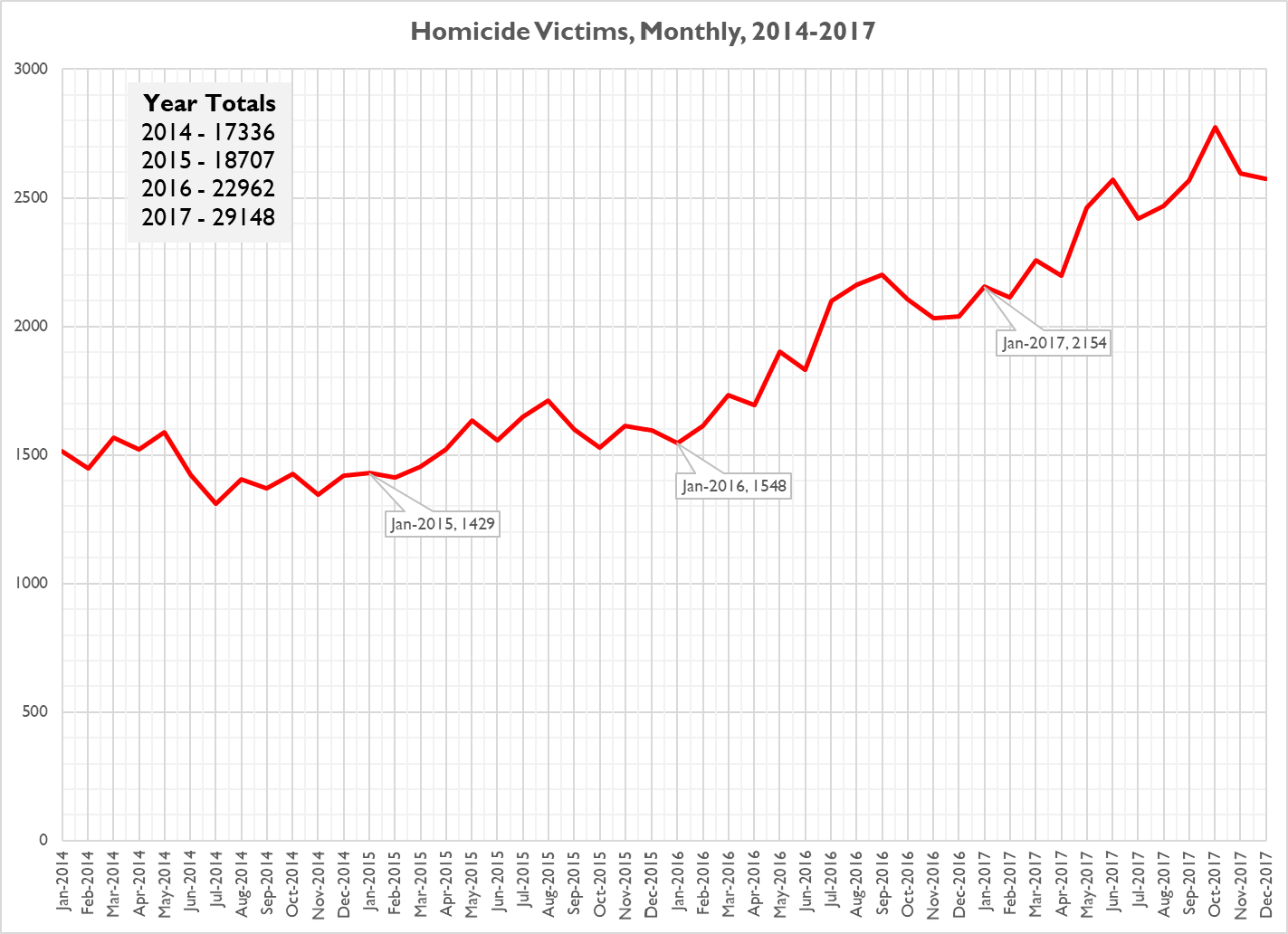
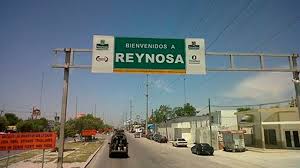 And the city proper:
And the city proper: 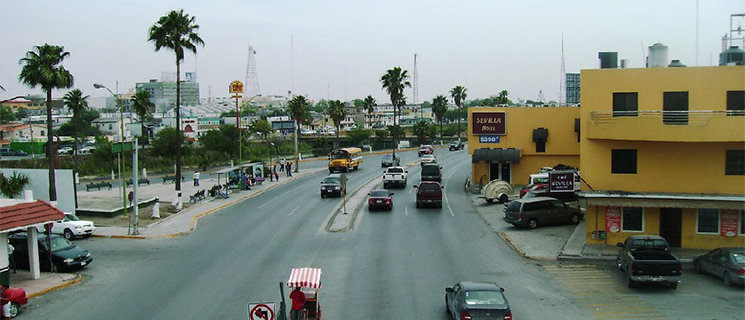 But one of its neighborhoods is less appealing:
But one of its neighborhoods is less appealing: 